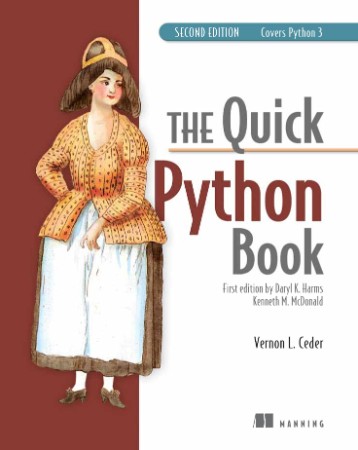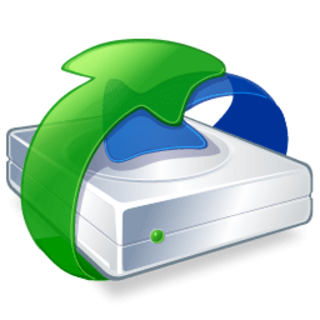Most Commented
The Quick Python Book - Naomi Ceder




Description material

pdf | 9.63 MB | English| Isbn:9781638353430 | Author: Naomi Ceder | Year: 2018
Description:
Summary
This third revision of Manning's popular The Quick Python Book offers a clear, crisp updated introduction to the elegant Python programming language and its famously easy-to-read syntax. Written for programmers new to Python, this latest edition includes new exercises throughout. It covers features common to other languages concisely, while introducing Python's comprehensive standard functions library and unique features in detail.
Foreword by Nicholas Tollervey, Python Software Foundation.
Purchase of the print book includes a free eBook in PDF, Kindle, and ePub formats from Manning Publications.
About the Technology
Initially Guido van Rossum's 1989 holiday project, Python has grown into an amazing computer language. It's a joy to learn and read, and powerful enough to handle everything from low-level system resources to advanced applications like deep learning. Elegantly simple and complete, it also boasts a massive ecosystem of libraries and frameworks. Python programmers are in high demand/mdash;you can't afford not to be fluent!
About the Book
The Quick Python Book, Third Edition is a comprehensive guide to the Python language by a Python authority, Naomi Ceder. With the personal touch of a skilled teacher, she beautifully balances details of the language with the insights and advice you need to handle any task. Extensive, relevant examples and learn-by-doing exercises help you master each important concept the first time through. Whether you're scraping websites or playing around with nested tuples, you'll appreciate this book's clarity, focus, and attention to detail.
What's Inside
Clear coverage of Python 3
Core libraries, packages, and tools
In-depth exercises
Five new data science-related chapters
About the Reader
Written for readers familiar with programming concepts--no Python experience assumed.
About the Author
Naomi Ceder is chair of the Python Software Foundation. She has been learning, using, and teaching Python since 2001.
Table of Contents
PART 1 - STARTING OUT
1. About Python
2. Getting started
3. The Quick Python overview
PART 2 - THE ESSENTIALS
4. The absolute basics
5. Lists, tuples, and sets
6. Strings
7. Dictionaries
8. Control flow
9. Functions
10. Modules and scoping rules
11. Python programs
12. Using the filesystem
13. Reading and writing files
14. Exceptions
PART 3 - ADVANCED LANGUAGE FEATURES
15. Classes and object-oriented programming
16. Regular expressions
17. Data types as objects
18. Packages
19. Using Python libraries
PART 4 - WORKING WITH DATA
20. Basic file wrangling
21. Processing data files
22. Data over the network
23. Saving data
24. Exploring data
This third revision of Manning's popular The Quick Python Book offers a clear, crisp updated introduction to the elegant Python programming language and its famously easy-to-read syntax. Written for programmers new to Python, this latest edition includes new exercises throughout. It covers features common to other languages concisely, while introducing Python's comprehensive standard functions library and unique features in detail.
Foreword by Nicholas Tollervey, Python Software Foundation.
Purchase of the print book includes a free eBook in PDF, Kindle, and ePub formats from Manning Publications.
About the Technology
Initially Guido van Rossum's 1989 holiday project, Python has grown into an amazing computer language. It's a joy to learn and read, and powerful enough to handle everything from low-level system resources to advanced applications like deep learning. Elegantly simple and complete, it also boasts a massive ecosystem of libraries and frameworks. Python programmers are in high demand/mdash;you can't afford not to be fluent!
About the Book
The Quick Python Book, Third Edition is a comprehensive guide to the Python language by a Python authority, Naomi Ceder. With the personal touch of a skilled teacher, she beautifully balances details of the language with the insights and advice you need to handle any task. Extensive, relevant examples and learn-by-doing exercises help you master each important concept the first time through. Whether you're scraping websites or playing around with nested tuples, you'll appreciate this book's clarity, focus, and attention to detail.
What's Inside
About the Reader
Written for readers familiar with programming concepts--no Python experience assumed.
About the Author
Naomi Ceder is chair of the Python Software Foundation. She has been learning, using, and teaching Python since 2001.
Table of Contents
PART 1 - STARTING OUT
1. About Python
2. Getting started
3. The Quick Python overview
PART 2 - THE ESSENTIALS
4. The absolute basics
5. Lists, tuples, and sets
6. Strings
7. Dictionaries
8. Control flow
9. Functions
10. Modules and scoping rules
11. Python programs
12. Using the filesystem
13. Reading and writing files
14. Exceptions
PART 3 - ADVANCED LANGUAGE FEATURES
15. Classes and object-oriented programming
16. Regular expressions
17. Data types as objects
18. Packages
19. Using Python libraries
PART 4 - WORKING WITH DATA
20. Basic file wrangling
21. Processing data files
22. Data over the network
23. Saving data
24. Exploring data
Category:Computers, Computer Programming, Programming Languages, Scripting Languages, Python (Computer program language)
Warning! You are not allowed to view this text.
Warning! You are not allowed to view this text.
Warning! You are not allowed to view this text.
Join to our telegram Group
Information
Users of Guests are not allowed to comment this publication.
Users of Guests are not allowed to comment this publication.
Choose Site Language
Recommended news
Commented



![eM Client Pro 9.2.1735 Multilingual [Updated]](https://pikky.net/medium/wXgc.png)



![[PORTABLE] Corel PaintShop Pro 2023 Ultimate 25.1.0.28 (x64) Multilingual](https://i.postimg.cc/PJdwT13s/Corel-Paint-Shop-Pro-2023.jpg)

![[PORTABLE] MobiKin Backup Manager for Android 1.2.21](https://i.postimg.cc/wBJ4MRzC/Mobi-Kin-Backup-Manager-for-Android.png)
![Movavi Video Editor 24.0.2.0 Multilingual [ Updated]](https://pikky.net/medium/qhrc.png)

